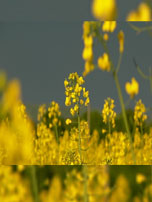SHAHEED KARTAR SINGH SARABHA AYURVEDIC MEDICAL COLLEGE & HOSPITAL
Affiliated to Guru Ravidas Ayurved University, Hoshiarpur Punjab
Affiliated to Guru Ravidas Ayurved University, Hoshiarpur Punjab

Botanical Name : Brassica juncea (Linn.) Czern. & Coss.
Family : Cruciferae; Brassicaceae
Introduction :
Latin name: Brassica = Plautus = Latin name which includes 22 species; juncea = rushy – resembling rush.juncus).
Scientific classification: Mustard is the common name for the family Brassicaceae (formerly Cruciferae) and its representative genusBrassica. Wild cabbage is classified as Brassica oleracea, black mustard as Brassica nigra, and white mustard as Brassica hirta. Curled mustard, or mustard green, is classified as Brassica juncea varietycrispifolia.
Mustard, common name for a large family of pungent-juiced herbs, important for the many food plants and other crops it produces, and for its representative genus. The family contains about 390 genera and 3,000 species. It is cosmopolitan in distribution, with centers of diversity in the Mediterranean region and southwestern and Central Asia, where about two-thirds of the species occur.
Most members of the mustard family are annual or perennial herbs; a few are shrubs or climbers. The flowers are characteristic and distinctive. Four petals are arranged opposite one another in the form of a cross. Six stamens are arranged in pairs. The filaments of the outer pair are short, whereas those of the two inner pairs are longer. The fruit is typically a capsule with two chambers divided by a false septum; at maturity, it splits in two from the bottom. Many variations on this basic fruit type are found in the family, and characteristics of the fruits are heavily used in distinguishing and classifying the various members.
The mustard family contains a great variety of food plants, but they do not form important parts of staple diets. Best known are the salad and vegetable crops, such as cabbage, cauliflower, brussels sprouts, broccoli, and kohlrabi, all of which are varieties of the wild cabbage native to coastal Britain and southern Europe. Table mustard is prepared from powdered seeds of two other species, black mustard and white mustard. Black mustard is a shaggy, many-branched plant, growing to about 1 m (about 3 ft) high, with dark-green lyre-shaped and lanceolate leaves, small yellow flowers, and short seedpods pressed against the stems. It is common along roadsides and in wastelands throughout the United States. White mustard is a somewhat smaller plant, with similar leaves, larger flowers, and bristly pods. Another important species, curled mustard or mustard greens, has large cleft leaves and is used as a vegetable. Turnip, radish, cress, and watercress are other vegetable members of this family.
The family is also an important source of vegetable oils, ranking fifth in worldwide importance behind soybeans, cottonseed, peanuts, and sunflower. Members of the representative mustard genus are prominent, with rape being the main crop.
Names in different Indian languages :
English : Indian Mustard
Hindi : Raai
Kannada : Sasive
Malayalam : Katugu
Sanskrit : Raajikaa
Tamil : Kadugu
Telugu : Avalu
Synonyms :
Raajikaa, Aasuri Raai, Tikshnagandhaa, krishnavarnak, Siddharthak.
Varieties & adulterants – (CV – controversy, AD – adulterants) :
Argemone mexicana – AD
Morphology :
Perennial shrub, grows 60 to 90 cm. high. bears long leaves and yellow flowers which blossom in summer
Leaves – simple, long, brodly ovate, dentate
Flower – yellow, racemes
Fruit- siliqua
Distribution & Habitat :
Cultivated
Chemical constituents :
Allyisothiocynate, sinalbin, p-hydroxybenzyl isothiocynate, sinapine
Properties :
Guna: tikshna;
Rasa: tikta;
Vipaka: katu;
Virya: ushna;
Dosha:kaphavatashamak
Karma :
Grahi, deepana, pachana, lekhanam
Antidysenteric, stomachic, diaphoretic, anthelmintic
Indication :
Pradara, kandu, kusta, krimi, medhas,
skin disease, cough, piles, leucorrhoea,vomiting, nerve disorder, gout,
Part used :
Seed, oil
Dosage :
Leaf juice 10-15 ml
Powder 2-4 g
Decoction 50-100 ml
Uses :
Paste of the seeds made in water and applied on the skin causes irritation. Rajika, when used in the form of oil, paste and decoction, is useful in many disorders of kapha and vata. Paste is made in a mortar in cold water, spread on a doth and kept for 10 minutes over the affected part. Orally, it is useful in loss of appetite and anorexia, It is used as an emetic in treating internal poisoning. In acute and chronic dysentery, when the seeds are swallowed with water, they break inside the lumen of the intestine thereby clearing the luminal mucous and relieving griping pain. Its excessive use causes vitiation of pitta and therefore ft should be used cautiously.
